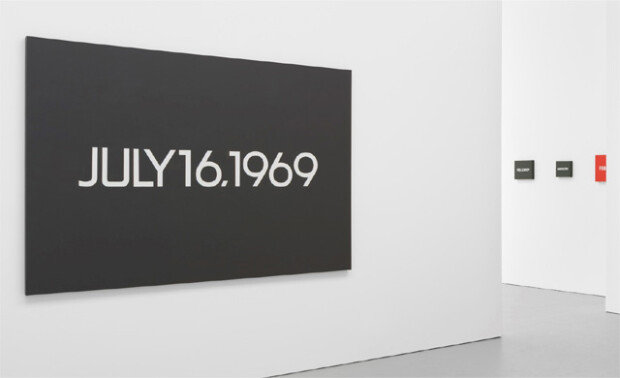Paintings completed upon death
Paintings completed upon death
Posted July. 18, 2019 09:04,
Updated July. 18, 2019 09:04

Is there anything fairer than time? Everybody is given 24 hours a day. It’s just a matter of how one uses time. Japanese conceptual artist On Kawara documented his days as paintings. There’s no image in his paintings, only dates. One may wonder why these are considered as art, but his “date paintings” garnered him international acclaim.
Kawara began the “Today” series on January 4, 1966, after his move to New York in 1965. Writing the date of production on a canvas was all he did, but it required more time and efforts than what it looked like. First, he painted the background in four even coats and applied seven coats of white paint for the letters of a date. These pieces were produced in accordance with the rules set by Kawara himself – eight standardized canvas sizes, solid color for the background, and no more than three pieces per day – and the paintings that were uncompleted by midnight were scrapped. On the backs and storage boxes of these paintings had news were lined with newspaper clippings of the day of production. The dates marked by the Japanese artist could be normal uneventful days but some of them were the days with important events for the human history, such as the end of the Vietnam War or 9/11 terror attacks.
Kawara had wanderlust and mostly made small 25-centimeter-wide paintings for their convenience, but he completed three large paintings measuring two meters in width in 1969 to celebrate the first human landing on the moon. This particular event held distinctive significance even to Kawara who kept himself detached from all forms of artistic expressions and personal emotions and strictly followed the rules.
The New York-based artist was extremely against any documentation of himself despite his own diligent recording of time. He did not share his profile nor allowed any interviews or pictures of himself. Even his age was marked as the number of days that he had lived. He passes away in July 2014 with almost 3,000 pieces in the “Today” series after 29,771 days of living. His “Today” paintings that had continued for about 50 years were finally completed with his death.







